UPSC Daily Current Affairs: 19th October 2024 | Current Affairs & Hindu Analysis: Daily, Weekly & Monthly PDF Download
GS3/Environment and Ecology
Dual Environmental Threats to Eastern Tropical Pacific Coral Ecosystems
Source: Down To Earth
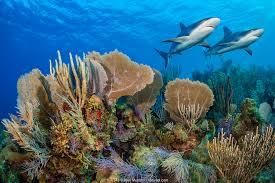
Why in news?
A recent study by researchers at the Max Planck Institute for Chemistry highlights that mesophotic coral ecosystems in the Eastern Tropical Pacific are being impacted by both warm water-induced bleaching and exposure to cold water. Published in the journal Science of the Total Environment, the research emphasizes the growing dangers to the health and functioning of these important reefs.
Mesophotic Coral Ecosystems
- Definition and Location: Mesophotic coral ecosystems can be found in the warm waters of tropical and subtropical areas, specifically at depths between 100 and 490 feet below the ocean's surface.
- Ecological Significance:
- These ecosystems mainly consist of corals, sponges, and algae, which together create a complex habitat.
- Mesophotic coral ecosystems are vital for the health of shallower coral reefs. They provide safe places and breeding grounds for many fish species that need these deeper waters for spawning, breeding, and feeding.
- Biomedical Potential:
- The unique organisms found in mesophotic corals have special defense systems that are being researched for use in developing new natural health products.
- Research Challenges and Advances:
- In the past, exploring these ecosystems was difficult because they were too deep for regular scuba diving and not deep enough to require advanced deep-sea diving gear.
- Recent improvements in underwater technology have resolved this issue, allowing for more thorough research and understanding of these important ecological areas.
About Coral Reefs
- Indonesia has the largest area of coral reefs in the world.
- The Great Barrier Reef off the coast of Queensland, Australia is the biggest collection of coral reefs.
- In South Asia, the countries with the most coral reefs are India, Maldives, Sri Lanka, and Chagos.
- Coral reefsserve important roles by:
- Protecting people from natural disasters by acting as a barrier.
- Generating income and jobs through tourism and recreation.
- Providing homes for fish, starfish, and sea anemones.
- Coral blocksare used in:
- Building constructions and roads.
- Cement production, where lime from corals is a key ingredient.
- Jewelry making.
- India has four main areas with coral reefs:
- Gulf of Mannar
- Andaman and Nicobar Islands
- Lakshadweep Islands
- Gulf of Kutch
Risks and threats to coral reefs
- Human activities like coastal development, harmful fishing techniques, and pollution from homes and factories are damaging the environment.
- There is a rise in sedimentation, too much harvesting of resources, and frequent storms that are causing further harm.
- Coral diseases, such as black band and white band, are spreading due to infectious microorganisms brought by people living near the coast.
GS2/Polity
First Chief Minister of J&K UT Takes Charge
Source: TH

Why in news?
Omar Abdullah of the National Conference was recently sworn in as the Chief Minister of the Union Territory of Jammu and Kashmir.
About
- Oath of Office: According to Article 164(3), the Chief Minister (CM) and other ministers take their oath of office from the Governor (or the Lieutenant Governorin Union Territories).
- The oath represents loyalty to the Constitution and the commitment to perform their duties according to the law.
- Omar Abdullah became the first Chief Minister of the Union Territory (UT) after the removal of Article 370, marking Jammu and Kashmir's change from a state to a Union Territory in 2019.
- President's Rule Revoked: After the election outcomes, President's Rulein Jammu and Kashmir was lifted.
- President's Rule:Article 356 of the Constitution permits the President to enforce direct governance (known as President's Rule) in a state or Union Territory when the local government is unable to operate according to constitutional rules.
GS2/Polity
SC upholds Section 6A of Citizenship Act as valid
Source: The Economic Times
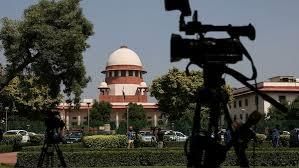
Why in News?
Political parties widely welcomed the Supreme Court's October 17, 2024 decision to uphold Section 6A of the Citizenship Act, which deals with citizenship under the Assam Accord.
What are the implications of upholding Section 6A for citizenship in Assam?
- Legal Recognition of the Assam Accord: The court's decision confirms the Assam Accord's legal importance, recognizing March 25, 1971, as the cut-off date for granting citizenship to immigrants. This establishes the Accord as a key legal document for handling citizenship issues in the state.
- Clarifying Citizenship Status: The ruling gives clear legal guidance about the citizenship status of people who came to Assam between January 1, 1966, and March 25, 1971. Those who meet certain conditions are granted citizenship, while those who arrived after 1971 are considered illegal immigrants.
- Impact on the NRC Process: This decision might affect the National Register of Citizens (NRC) process in Assam by helping to decide who can be included. The established cut-off date will assist in checking citizenship claims, which could influence individuals who risk being labeled stateless.
How does this ruling interact with existing immigration laws and policies?
- Consistency with the Foreigners Act: The ruling aligns with existing immigration policies under the Foreigners Act, where illegal immigrants are identified and potentially deported.
- Implications for Deportation and Detection: The verdict mandates continued efforts to detect and deport illegal immigrants who arrived post-March 25, 1971.
- This may intensify identification and deportation processes, requiring robust legal and administrative mechanisms.
- Role in NRC and Citizenship Amendment Act (CAA) Debate: The ruling interacts with ongoing discussions about the CAA, which grants citizenship to non-Muslim migrants from neighboring countries who entered before December 31, 2014.
What are the broader constitutional implications of this decision?
- Federalism and Regional Autonomy: The decision supports Assam's distinct historical and cultural background, acknowledging the state's unique legal arrangements as outlined in the Assam Accord.
- Right to Equality and Non-discrimination: By confirming that Assam can have different cut-off dates for deciding citizenship compared to other parts of India, the ruling brings up issues about fair treatment and whether laws should be the same everywhere in the country.
- Judicial Endorsement of Accord-based Legislation: This ruling establishes a new standard for supporting laws that are based on historical agreements or regional pacts.
Way forward
- Full Implementation of the Assam Accord: Ensure the complete execution of all clauses of the Accord, including detecting, deleting, and deporting illegal immigrants, while providing support to those recognized as citizens to integrate smoothly into society.
- Strengthen Legal and Administrative Frameworks: Enhance the infrastructure for the NRC process, deportation mechanisms, and border management to maintain consistency in immigration policies, while addressing humanitarian concerns for affected individuals.
GS3/Defence
iDEX Initiative
Source: The Hindu

Why in News?
The Ministry of Defence is requesting additional funds to sustain its iDEX scheme, a central sector initiative launched in 2021, as 90% of the allocated budget for 2021-26 has already been utilized.
Innovations for Defence Excellence (iDEX)
- Innovations for Defence Excellence (iDEX) is a government initiative started in 2018 aimed at modernizing the Defence Industry.
- iDEX focuses on encouraging innovation and technology development in the fields of Defence and Aerospace.
- It aims to involve various industries, including MSMEs, start-ups, individual innovators, research and development institutes, and academic institutions.
- iDEX will offer funding and additional support to these industries to help them conduct Research & Development.
- The initiative will be funded and overseen by the Defence Innovation Organization (DIO), acting as its executive arm.
- iDEX has teamed up with prominent incubators across the country to provide assistance, technical support, and guidance to those who succeed in iDEX challenges.
Main objectives of iDEX
- To create models for corporate venture capital that meet the needs of the Indian Defence, focusing on finding new technologies, linking innovators with military units, and working together to develop new technologies suitable for weapon systems used by the Indian Armed Services.
- To produce military-grade products that address critical requirements of the Indian defence sector by developing or using advanced technologies.
- To foster a culture of innovation within the Indian Defence and Aerospace sectors by involving startups and innovators in collaborative creation and innovation processes.
GS2/International Relations
India, Pakistan avoid blaming each other at SCO meeting
Source: TOI
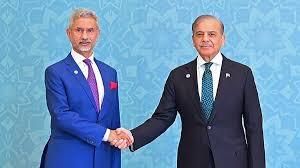
Why in News?
External Affairs Minister S. Jaishankar had an informal interaction with Pakistan's Prime Minister Shehbaz Sharif and Foreign Minister Ishaq Dar during the concluding lunch of the SCO summit in Islamabad.
What were the major insights during SCO 2024 summit?
- Diplomatic Engagement: The informal meeting between India's External Affairs Minister and Pakistan's leaders showed a significant change in diplomatic talks, with a friendlier approach compared to earlier discussions.
- Avoidance of Contentious Issues: The leaders from both India and Pakistan chose not to talk about sensitive matters like Kashmir, focusing instead on working together rather than arguing during this summit.
- Collective Responsibility: The Indian foreign minister stressed the importance of having an “honest conversation” about building trust and cooperation in the SCO region. He pointed out that addressing issues like terrorism and separatism is crucial for enhancing trade and connectivity.
- Positive Outcomes: The summit led to the signing of eight important documents. These included plans for economic discussions, collaboration in the creative economy, and strategies to tackle challenges in areas such as green development and the digital economy.
- Future Cooperation: The joint statement from the summit highlighted the need to make the most of the region's potential in various fields like trade, innovation, and climate change, showing a commitment to working together for economic growth.
Challenges for India
- India-Pakistan Relations: The inclusion of Pakistan in the SCO makes it harder for India to position itself within the organization. The ongoing rivalry between India and Pakistan can limit India's ability to effectively promote its interests, especially because both China and Russia are significant influences in the group.
- Balancing Relations: India's involvement in the SCO requires careful management of its long-standing relationship with Russia while also fostering its increasing connections with Western countries. This task is especially difficult considering the SCO's frequently anti-Western stance.
Way forward
- Strengthen Regional Cooperation: India should focus on shared goals within the SCO (Shanghai Cooperation Organization), such as fighting terrorism, promoting economic growth, and improving connectivity. It is important to use diplomatic methods to ease tensions with Pakistan and keep open lines of communication.
- Strategic Balancing: India can adopt a balanced strategy by aligning its activities within the SCO with its larger foreign policy objectives. This includes building strong partnerships with Russia and Central Asia, while also managing its relationships with Western countries carefully.
GS1/Indian Society
Abject failure: Reports Global Hunger Index (GHI), 2024
Source: The Indian Express
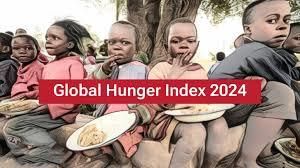
Why in News?
The 2024 Global Hunger Index (GHI) shows that around 200 million undernourished people in India this year would represent the seventh largest population globally, similar to Brazil's population size.
Why it is a matter of concern?
- High Undernourishment Levels: India ranks 105 out of 127 countries on the Global Hunger Index, falling into the "serious" category with a score of 27.3. Approximately 200 million people, or about 14% of India's total population, suffer from undernourishment, a number similar to the entire population of Brazil.
- Child Malnutrition: The rate of child stunting in India is 35.5%, while the rate of child wasting is 18.7%. These numbers show a significant problem with malnutrition among children, indicating failures in the healthcare system and social safety nets.
- Infant Mortality Rate: India's infant mortality rate is slightly below the global average, with 26 deaths per 1,000 live births compared to the global average of 28. However, this remains a serious concern.
- Impact of Food Inflation: Food inflation has more than doubled from 3.8% in FY22 to 7.5% in FY24. This increase has a greater impact on low-income families, making it harder for them to access food.
What about India’s GDP growth?
- High Economic Growth Rate: India was the world’s fastest-growing economy in FY24, with a growth rate of 6.8% and a GDP nearing $4 trillion, ranking fifth globally.
- Low Per Capita Income: Despite rapid economic growth, India’s per capita income remains low at $2,485 in FY24, which is less than a fourth of the global average of $13,920 in FY22. This disparity suggests significant income inequality and limited improvement in living standards for many.
- Record Food Production vs. Hunger: In FY24, India achieved one of its highest food production levels at 332 million tonnes. However, the abundance in food production did not translate into improved food security due to distribution challenges, economic disparities, and climate-related impacts.
What is the debate about data collection methodology?
- Use of Sample Registration System (SRS) Data: The GHI utilizes information from India's Sample Registration System (SRS), which is published every year by the Ministry of Statistics and Programme Implementation. This system provides important data on:
- Births
- Deaths
- Infant mortality rates
- Other key health indicators
- Government’s Criticism of GHI Methodology: The Indian government has frequently criticized the methodology used by the GHI. The concerns mainly focus on:
- Dependence on survey data
- Use of subjective measures to evaluate hunger and malnutrition
- Challenges in Addressing Undernutrition: Despite having enough food production, there are ongoing challenges that hinder food security in India, including:
- Poor nutrition programs
- Effects of climate change on farming productivity
- Socioeconomic issues that impact access to food
Way forward
- Strengthen Nutrition and Social Safety Programs: India should enhance the effectiveness of nutrition programs, such as the Integrated Child Development Services (ICDS) and Mid-Day Meal Scheme, ensuring better coverage, quality, and targeting to reduce child malnutrition and undernourishment.
- Address Economic Inequality and Improve Food Access: Implement policies to reduce income disparities and make essential foods more affordable, such as expanding the Public Distribution System (PDS) to cover vulnerable groups affected by inflation and climate-related agricultural disruptions.
GS1/Indian Society
 |
Download the notes
UPSC Daily Current Affairs: 19th October 2024
|
Download as PDF |
India’s SDG focus and its Human Development issues
Source: The Hindu

Why in News?
On September 9-10, 2023, New Delhi hosted the G-20 Summit, where attendees pledged to improve the implementation of the UN Agenda 2030 for Sustainable Development.
How effectively is India progressing towards achieving the SDGs by 2030?
- Current Status: India is placed in the “medium human development” category, with a Human Development Index (HDI) value of 0.644. It ranks 134 out of 193 countries.
- Improvement Over Time: Since 1990, India’s HDI value has grown by 48.4%, rising from 0.434 to 0.644 by 2022. This shows positive long-term growth, even though there have been recent slowdowns and small drops due to challenges like the COVID-19 pandemic.
- SDG Interconnections: The dimensions that make up India’s HDI are closely connected to several Sustainable Development Goals (SDGs), specifically SDG-3 (good health), SDG-4 (quality education), and SDG-5 (gender equality). Making progress in these areas is essential for reaching wider SDG targets.
- Rank Improvements: Between 2015 and 2022, India improved its HDI ranking by four places. In comparison, neighboring countries like Bangladesh and Bhutan improved their rankings by 12 and 10 places, respectively. This highlights the need for India to strengthen its efforts for better development.
What are the key human development challenges that India faces?
- Gender Inequality: India has a significant gap in the Labor Force Participation Rate (LFPR) between genders. Women participate at only 28.3%, while men participate at 76.1%, creating a difference of 47.8 percentage points. The Gender Development Index (GDI) shows that there are major differences in Human Development Index (HDI) achievements for men and women, which hinders overall development.
- Income Inequality: There is a high level of income inequality in India. The richest 1% of the population owns 21.7% of all income, which is much higher than many nearby countries and above the global average. This situation creates obstacles to sustainable development and fair growth.
- Education and Health: The COVID-19 pandemic has had a harmful effect on education and health services. This has increased risks and challenges for poorer and marginalized communities.
- Urban-Rural Divide: There is a clear difference in the participation of women in the labor force between rural areas (41.5%) and urban areas (25.4%). This suggests that policies in urban areas may not be effectively helping women to find employment.
What strategies can be implemented?
- Strengthening Gender Equality: Use approaches that change the way we think about gender to improve women's involvement in the workforce. This means creating policies that support a good balance between work and personal life, offer flexible work options, and provide specific training programs to help women develop necessary skills.
- Enhancing Education and Skill Development: Put money into high-quality education, job training, and ongoing learning opportunities that are accessible to everyone, especially in rural areas where resources might be limited.
- Promoting Social Protection: Increase social safety nets and proactive support programs aimed at helping vulnerable groups, particularly women and those who are marginalized in society.
- Reducing Income Inequality: Introduce fair tax systems and policies that redistribute wealth to tackle the issue of income being concentrated in the hands of a few.
- Multi-Stakeholder Engagement: Encourage cooperation among the government, community organizations, and businesses to carry out sustainable development projects effectively.
GS3/Enviro & Biodiversity
As the world warms and cool
Source: Down To Earth

Why in News?
The growing demand for cooling is resulting in higher fossil fuel consumption for electricity generation, which contributes to climate change and gradually raises atmospheric temperatures.
What are the primary impacts of climate change on human societies?
- Heat-Related Health Risks: Rising temperatures and more frequent heatwaves lead to a greater number of cases of heat-related illnesses and deaths. For example, global heatwaves currently cause around 12,000 deaths each year.
- Threats to Food Security: Severe temperatures and unpredictable weather patterns harm farming, which affects the quality and availability of food, leading to higher prices.
- Access to Essential Services: More than 1.1 billion people are at risk because they do not have enough access to cooling systems. This shortage affects crucial services like health care (such as the storage of vaccines), food preservation, and overall economic productivity.
- Increased Mortality: By the year 2050, the number of deaths caused by extreme heat is expected to rise significantly. The World Health Organization estimates that there could be as many as 255,000 heat-related deaths each year.
How Can Societies Effectively Adapt to the Ongoing Changes in Climate?
- Promoting Energy-Efficient Cooling: Enhance the performance of cooling systems to lower energy use and lessen climate effects. This includes moving away from hydrofluorocarbons (HFCs) as part of international agreements like the Kigali amendment.
- Nature-Based Solutions: Use natural methods to cool spaces, such as planting shade trees and designing buildings smartly to help control temperatures without relying solely on machines.
- Policy and Technological Innovations: Governments should make sure that cooling devices meet strict energy efficiency rules and encourage the creation of sustainable cooling technologies.
What Role Does International Cooperation Play in Addressing Climate Change?
- Global Agreements: Initiatives like the Paris Agreement and the Kigali amendment to the Montreal Protocol highlight the importance of countries working together to lower greenhouse gas emissions and support sustainable development goals.
- Shared Resources and Technology Transfer: Global efforts, particularly those led by Rwanda and the African Group, promote the need for access to energy-efficient technologies, especially for developing countries.
- Enhancing Compliance and Monitoring: Nations are encouraged to strictly follow global agreements, like reducing HFCs, to meet climate goals and protect vulnerable populations.
Way Forward
- Speed Up the Shift to Energy-Saving Cooling: Boost global efforts to double the energy efficiency of cooling equipment and promote climate-friendly refrigerants.
- Incorporate Cooling Solutions into Climate and Development Policies: Acknowledge that cooling is a vital issue for development and address its important role in reducing poverty and achieving the Sustainable Development Goals (SDGs).
GS2/Governance
Role of Madarsa in Education System
Source: HT
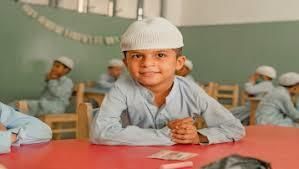
Why in News?
The National Commission for Protection of Child Rights (NCPCR) recently informed the Supreme Court that the curriculum taught in madrasas is insufficiently comprehensive, violating the mandates of the Right to Education.
- The Commission argues that the textbooks used in these institutions promote teachings focused on the doctrinal superiority of Islam.
What are the Recent Development Related to Madrasas in UP?
- The Allahabad High Court ruling from March 2024 stated that the Uttar Pradesh Board of Madarsa Education Act, 2004 is unconstitutional.
- The court's decision was based on the idea that the Act goes against the principle of secularism found in the Constitution and violates basic rights guaranteed under Article 14, which ensures equality before the law.
- The NCPCR (National Commission for Protection of Child Rights) submitted its views to the Supreme Courtin response to appeals challenging the Allahabad High Court's decision.
- The NCPCR has suggested that all Muslim and non-Muslim children should be taken out of Madrasas and placed in schools to get a basic education according to the RTE Act, 2009.
What is the State of Madrasas in India?
- Number of Madrasas in India:
- As of 2018-19, India had a total of 24,010 madrasas, of which 19,132 were recognised, while 4,878 remained unrecognized.
- Recognised madrasas are affiliated with state madrasa education boards, while unrecognized madrasas follow curricula set by prominent seminaries such as Darul Uloom Nadwatul Ulama (Lucknow) and Darul Uloom Deoband.
- Uttar Pradesh has the largest share of madrasas in the country, with 11,621 recognised and 2,907 unrecognized institutions, representing 60% of India's total madrasas.
- Rajasthan had the second highest number of madrasas, with 2,464 recognised and 29 unrecognized.
- Certain states and Union Territories, including Delhi, Assam, Punjab, Tamil Nadu, and Telangana, reported having no recognised madrasas.
- Categories of Madrasas in India:
- Madrasa Darse Nizami: These operate as public charitable institutions and are not required to adhere to the state school education curriculum.
- Madrasa Darse Aliya: These are affiliated with state madrasa education boards, such as the Uttar Pradesh Board of Madrasa Education.
- Over 20 states in India have established their own madrasa education boards, which are administered by the respective state governments.
- Teachers and officials in recognised madrasas under these boards are appointed by the state government.
- Education and Curriculum:
- Curriculum: Education in madrasas mirrors the structure of mainstream school and higher education, with students progressing through various levels like Maulvi (equivalent to Class 10), Alim (equivalent to Class 12), Kamil (equivalent to a Bachelor’s degree), and Fazil (equivalent to a Master’s degree).
- Medium of Instruction: The medium of instruction in charitable Madrasa Darse Nizami includes Arabic, Urdu, and Persian, while Madrasa Darse Aliya uses textbooks either published by state textbook corporations or prescribed by the National Council of Educational Research and Training (NCERT).
- A significant number of madrasa boards across India have adopted the NCERT curriculum, with compulsory subjects such as Mathematics, Science, Hindi, English, and Sociology.
- In addition to the core subjects, students can choose an optional paper, selecting either Sanskrit or Deeniyat (religious studies, including the Quran and other Islamic teachings). The Sanskrit paper includes Hindu religious scriptures and teachings.
- Funding:
- The primary source of funding for madrasas comes from the respective state governments, with supplementary support from the central government under the Scheme for Providing Education to Madrasas/Minorities (SPEMM).
- SPEMM offers financial assistance to madrasas and minority institutions across the country, facilitating their educational development and support.
- It has two sub-schemes:
- Scheme for Providing Quality Education in Madrasas (SPQEM): It focuses on improving educational standards.
- Infrastructure Development of Minority Institutes (IDMI): It addresses infrastructure enhancement.
- In April 2021, SPEMM was transferred from the Ministry of Minority Affairs to the Ministry of Education for more streamlined administration.
What is the Role of Madrasas in the Indian Education System?
- Cultural Preservation: Madrasas have historically played a vital role in keeping and sharing Islamic culture, beliefs, and values within Muslim communities in India. This helps strengthen their sense of identity and community.
- Education and Literacy: These institutions offer educational opportunities for many Muslim children, especially in areas where formal schools are hard to access.
- However, there are worries about the quality of education provided, as many students struggle with low literacy rates and often do not advance beyond secondary education.
- Influence on Ideology: While some Madrasas promote positive values, others have faced criticism for encouraging extremist beliefs and anti-national attitudes, which can lead to social divisions and tensions between communities.
- Legal and Funding Issues: The presence of Madrasas raises important questions about secularism and fairness in education funding. Critics argue that public money should not support religious education unless there is equal funding for other religions, ensuring adherence to secular principles.
- Challenges to Integration: Many graduates from Madrasas find it hard to fit into the wider job market because they often lack vocational skills and modern education. This educational style can lead to a feeling of isolation from mainstream society, making it difficult for them to improve their social standing and build connections.
Way Forward
- Vocational Training: Introduce vocational and skill development programs within Madrasas to equip students with practical skills that enable them to compete effectively in the job market.
- Quality Standards and Accreditation: Establish regulatory frameworks and quality standards for Madrasas, including an accreditation system to ensure compliance with modern educational practices.
- Equitable Funding: Implement fair funding policies that support all educational institutions, ensuring that public funds enhance educational quality and infrastructure without promoting religious ideologies.
- Community Engagement: Foster awareness and collaboration with parents, community leaders, and NGOs to emphasize the importance of holistic education and literacy, encouraging families to prioritize formal education for their children.
|
39 videos|4566 docs|979 tests
|
FAQs on UPSC Daily Current Affairs: 19th October 2024 - Current Affairs & Hindu Analysis: Daily, Weekly & Monthly
| 1. What are the main environmental threats to coral ecosystems in the Eastern Tropical Pacific? |  |
| 2. How does the Global Hunger Index (GHI) report reflect on India's food security situation? |  |
| 3. What role does the iDEX initiative play in India's defense sector? |  |
| 4. How does the Supreme Court's upholding of Section 6A of the Citizenship Act impact citizenship in India? |  |
| 5. What is the significance of India's focus on Sustainable Development Goals (SDGs) in addressing human development issues? |  |


























